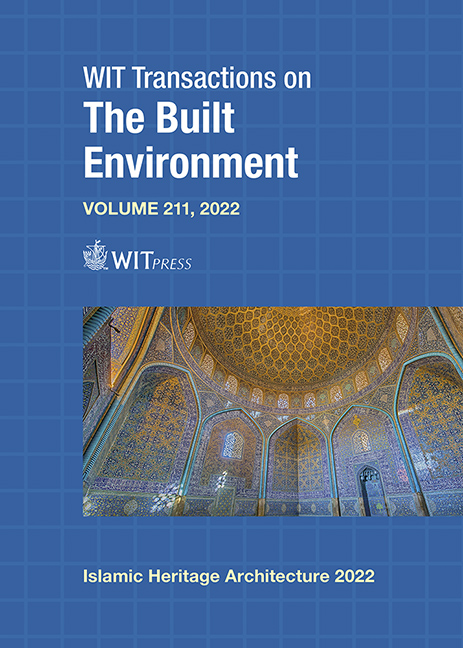AESTHETIC INTERPRETATION FOR ISLAMIC GEOMETRY IN INTERIOR DESIGN
Price
Free (open access)
Transaction
Volume
211
Pages
13
Page Range
89 - 101
Published
2022
Paper DOI
10.2495/IHA220071
Copyright
Author(s)
WAEL RASHDAN, AYMAN FATHY ASHOUR
Abstract
The aesthetics of Islamic interior design consist of a dynamic system arising from abstract ornamentation in conjunction with visual inscriptions based on geometric patterns. Such a system conditions the experience of a building at both the perceptual and cognitive levels. Although several studies have discussed the history, semiotics, structure, mathematical laws, constitutive variants, and global philosophical motivations of Islamic geometrical pattern, substantial questions still remain unaddressed, particularly within visual aesthetics. Hence, the objective of this paper is to discuss the aesthetic phenomenology of Islamic geometry within the context of interior design, and its purpose and logic in terms of the language of material expression. A literature review was conducted to explore the issue of representation in Islamic design, while a qualitative research methodology based on the content analysis was employed. The paper explores the issue of representation in Islamic design and aims to study the Islamic interior’s aesthetics by identifying appropriate interpretation methods for its abstract geometric ornamentation. The paper identifies four generic categories for the purposes of this interpretation: purely decorative geometry, metaphoric geometry, kinetic geometry, and conceptual geometry. In conclusion, the aesthetic of Islamic interiors forms a projective aesthetic space as it induces projective behavior through a system of visual metaphor.
Keywords
Islamic interior design, abstract geometric ornamentation, Islamic geometry, representation, aesthetics




